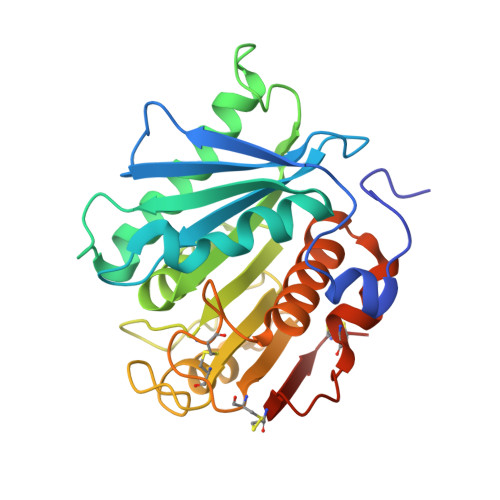Enhancing PET Degrading Enzymes: A Combinatory Approach.
Joho, Y., Royan, S., Caputo, A.T., Newton, S., Peat, T.S., Newman, J., Jackson, C., Ardevol, A.(2024) Chembiochem 25: e202400084-e202400084
- PubMed: 38584134
- DOI: https://doi.org/10.1002/cbic.202400084
- Primary Citation of Related Structures:
8VE9, 8VEK, 8VEL, 8VEM - PubMed Abstract:
Plastic waste has become a substantial environmental issue. A potential strategy to mitigate this problem is to use enzymatic hydrolysis of plastics to depolymerize post-consumer waste and allow it to be reused. Over the last few decades, the use of enzymatic PET-degrading enzymes has shown promise as a great solution for creating a circular plastic waste economy. PsPETase from Piscinibacter sakaiensis has been identified as an enzyme with tremendous potential for such applications. But to improve its efficiency, enzyme engineering has been applied aiming at enhancing its thermal stability, enzymatic activity, and ease of production. Here, we combine different strategies such as structure-based rational design, ancestral sequence reconstruction and machine learning to engineer a more highly active Combi-PETase variant with a melting temperature of 70 °C and optimal performance at 60 °C. Furthermore, this study demonstrates that these approaches, commonly used in other works of enzyme engineering, are most effective when utilized in combination, enabling the improvement of enzymes for industrial applications.
Organizational Affiliation:
Manufacturing, Commonwealth Scientific and Industrial Research Organisation, Clayton, Victoria, 3168, Australia.















